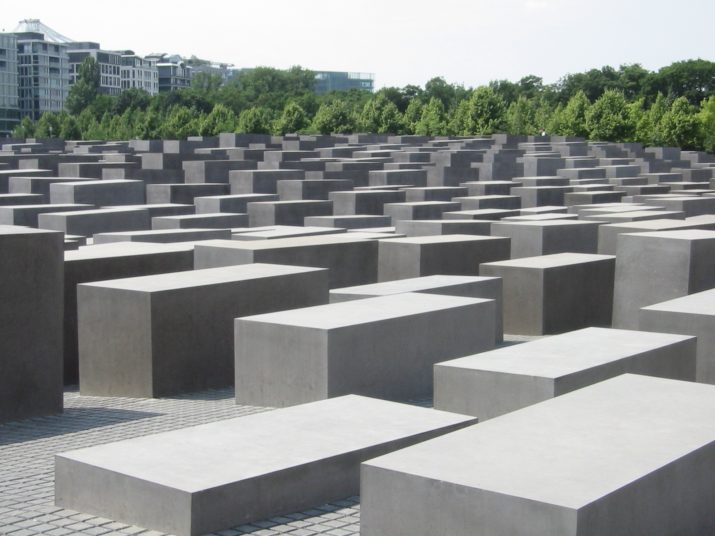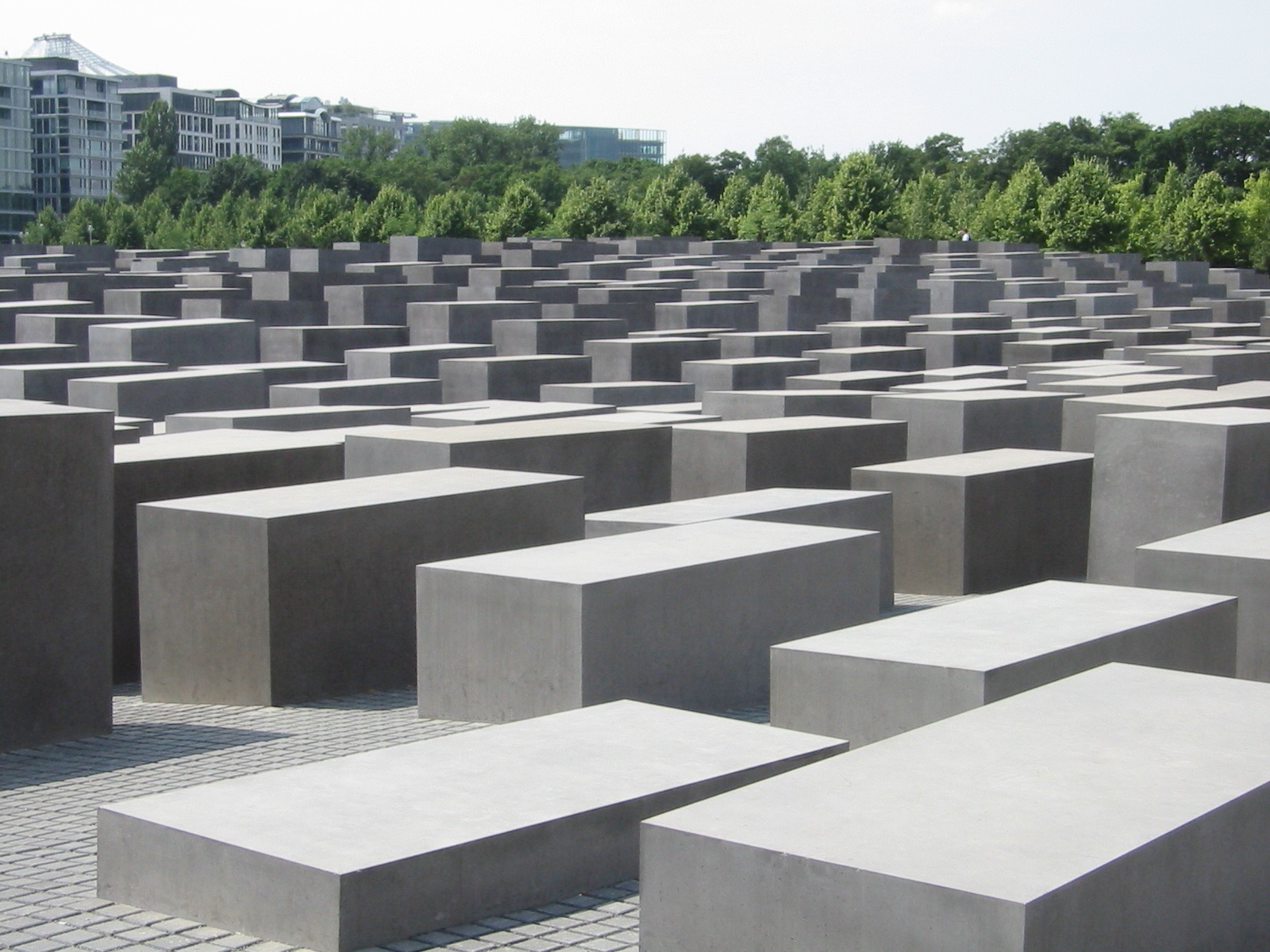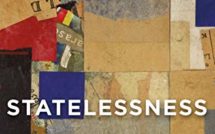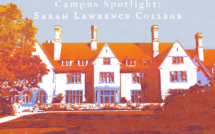

This is an introduction to our special feature, Displacement, Memory, and Design.
Across Europe and the US, large scale projects addressing the history and memory of displacement are underway. All of these efforts are concerned not only with rectifying the prevailing historical narratives but also with using design as a way to tell a more appropriate and inclusive narration. One need only think of the recent and controversial removal of the Robert E. Lee Confederate monument in Richmond, Virginia, and the efforts of the Monument Lab in Philadelphia in close collaboration with the Mellon Foundation’s Monument initiative.[1] Their work is part of a nation-wide survey of all commemorative sites in the US to reimagine, through innovative design options, how to retell the American story, fractured by slavery, the removal of Indigenous peoples, and the Civil War. It will take time and the close collaboration between artists and architects, historians, curators, psychologists, and local community activists to move that daunting challenge forward.
In this special issue on Displacement, Memory, and Design, our contributors bring their research and expertise to showcase what such a re-examination and reimagining of the past can look like, and what central role design can play. Germany, and in particular its capital Berlin, are often cited as examples of how design can be a critical tool to help a country create a shared memory and engage its citizens and visitors in an ongoing conversation about its Nazi past. The discrimination and denationalization of its Jewish citizens, the pogrom of 1938, and Aryanization of all Jewish property forced Jews into fleeing their homes. Those who could not escape for safety abroad were deported to ghettos in Poland and ruthlessly murdered in the regime’s extermination camps. Hundreds of thousands of Jews from occupied countries across Western Europe were deported to the East to be killed. In its most destructive phase, the regime’s racial warfare in the East led to the death of more than six million Jews, millions of non-Jewish Poles, and the death of more than 25 million Soviet soldiers and civilians.
Germany’s Vergangenheitsbewältigung (literally meaning the struggle to come to terms with the past) has been ongoing since the end of WWII and has been a difficult and contentious process for those who demand more accounting of these crimes and more “memory,” and for those that insist on letting go of the past and moving on. We use it here in broad strokes and as a starting point to discuss this issue’s contributions in more detail.
In the German case, the process of agreeing on a shared history and memory of WWII and the Holocaust was defined by the fact that two separate German states existed for forty years, each with their own memory of the war and the crimes committed by Germany during the Third Reich. The crimes on the Eastern front barely received mention in that memory work given that West Germany was fully enveloped in the Western military alliance against the Soviet Union. For much of the postwar years, the guiding principle for those committed to not forget was “Nie wieder Auschwitz” (never again Auschwitz), emphasizing the centrality of the Shoah in postwar West German understanding of the Nazi past. Until the collapse of the Soviet Union, the Holocaust was and would remain the central crime of the war, and Wiedergutmachung for those crimes in form of financial payments to surviving Jews (in the West) and the newly founded state of Israel. The memorial sites, for example, of the concentration camps in Dachau or Belsen were designed to commemorate foremost the Jewish victims of the Holocaust, and their design of commemoration reflects that emphasis.[2] In East Germany, the memory of the Holocaust was marginalized, and the narration and commemoration of WWII focused instead on those German antifascists who had stood up to the Nazi regime. Also commemorated were the millions of victims of the regime in the Soviet Union, and the valiant victory of Communism over fascism. The memorial design of the former “Neue Wache,” along Unter den Linden in East Berlin (reconfigured after the Fall of the Berlin Wall), and the concentration camp memorial Buchenwald expressed that particular memory of WWII and its victims in stark contrast to that of West Germany.[3]
German unification in 1990 brought about a serious pondering over how to reunify not only two states, but also the foundational assumption of a democratic, postwar German society. That search also necessitated the creation of a new shared history and memory of National Socialism and its crimes. As James Young, who advised the German government on the challenges of the creation of the Holocaust Memorial in Berlin, suggested: “How does a divided nation reunite itself on the bedrock memory of its crimes? Nations are not usually built on the memory of their crimes, but on their triumphs and martyrdom. The challenge was daunting: No other nation has ever attempted this.”[4]
Young made those comments in his 1999 report to the German Bundestag on why such a central monument with its radically abstract design by Peter Eisenman was key to coming to terms with the German past.[5] The chosen, central space for memory in the heart of Berlin (adjacent to the Reichstag, the German parliament) opened in 2005. It is not, as is often assumed in the U.S., the first memorial in Germany built to commemorate the murder of the Jews, but it is the first national memorial. The Mahnmal was a bold departure from the traditional “monument” (Denkmal) of times past to a new vision of commemoration that was not representational but much more abstract, inviting the visitor to individually engage and reflect. Thus, the Memorial to the Murdered Jews was a deliberate decision by the newly unified Germany that Holocaust memory was not just to be preserved but needed to be created anew for future generations of Germans. Such a bold statement in the heart of Berlin was to reiterate that taking collective responsibility for that crime was central to the political self-understanding of the country’s citizens and its democracy.
The Mahnmal to the Murdered Jews of Europe was only the beginning of commemoration and often long-delayed memory work. In its close vicinity one can now also reflect on the Nazis’ persecution and murder of LGBTQ+ individuals,[6] and the brutal murder of hundreds of thousands of Roma and Sinti. The Topographie des Terror (Topography of Terror) is also in close vicinity to these sites.[7] It is a place not so much dedicated to the victims, but to document the work of the so-called desk-murderers, the bureaucracy of murder, the individuals of the SS, Gestapo and in the Reichsicherheitshauptamt who planned and implemented the Final Solution. Another more recent memorial to victims of the Nazi regime commemorates the tens of thousands of Germans with mental or physical disabilities who were taken from their families and murdered as part of the Nazis’ T4 Euthanasia program.[8] Today, sites of actively uncovering the Nazi past and German complicity are spread across the city. Their work is dedicated to documenting and commemorating the millions of forced laborers (Zwangsarbeiter) from Eastern Europe who were brought to Germany to labor in German industry under horrific and dehumanizing conditions.[9]
Two of our contributors in this special issue of EuropeNow demonstrate that the process of Vergangenheitsbewältigung and commemoration in Germany is indeed ongoing. Two new museums in the heart of Berlin, not far from the memorial sites described above, continue to engage the public in how to remember the German past, and how to make sense of it in a world that is again facing the kinds of massive expulsions and displacements that we have generally associated with WWII.
In her interview with EuropeNow, Gundula Bavendamm, the Director of The Documentation Center for Displacement, Expulsion, Reconciliation, discusses Berlin’s newest museum and commemorative site. The Center opened in June 2021 and is dedicated to the fourteen million Germans who were expelled from their homes in East Prussia, Silesia, Sudetenland, and other parts of Eastern Europe during the last months of WWII, and as part of the postwar settlement among the victorious Allies. Integrating these millions of Germans, who would make up 20 percent of the West German population by the 1950s, was a difficult and long-lasting process. It was also a political challenge for the new democracy whose leaders feared a possible emergence of revanchism. Without a peace treaty after the war, and given the growing division of Europe, there was little hope for these individuals to “return” to their former homes, much as they might have hoped for that possibility. Their individual suffering, their loss of loved ones (an estimated two million died during the expulsions) and Heimat (home, belonging, and culture) during the forced expulsions was passed on and evoked at annual gatherings, but no monument or museum was created to put into stone their experiences. Their claims for recognition posed a daunting challenge. Could their suffering even be acknowledged given the suffering that Germans had inflicted on others during the war? Would an official acknowledgement, such as a museum or memorial site be tantamount to equating German suffering with that of its victims? Would such a site relativize the Holocaust? Simply put, can perpetrators also be victims?
Bavendamm discusses this challenge and illustrates how the physical design of space—location, infrastructure, and curatorial choices—is central to her institutions’ vision of how the history of the expulsion of Germans and their suffering can be told with empathy. But her institutions’ challenge was also to tell this history through a critical, scholarly perspective by framing it within the larger context of expulsions under National Socialism, a causal connection that too often has been ignored by the Germans who suffered expulsion after the war. The design choices of the Center furthermore frame the expulsion of the Germans after WWII as part of a larger history of twentieth-century expulsions and ethnic cleansing.
The Documentation Center, as Bavendeamm tells us, is located in close proximity to the Topography of Terror and it also sits less than a stone’s throw away from the ruins of the Anhalter Bahnhof, from where thousands of elderly Berliners were sent to Terezín, and where many exiles said their last good bye to their beloved city. It is in this historical location that Berlin’s new Exilmuseum will be built. Nothing of that train station remains other than its bombed-out portico, which served for many decades as a bitter reminder of the catastrophic bombing of Berlin. By 2025, as Ayham Dalal tells us in his contribution, that same ruin will be integrated into the entry of this new place of commemoration designed by Danish architect, Dorte Mandrup.[10] The Exilmuseum will be dedicated to the hundreds of thousands of Germans, both Jewish and non-Jewish, who were forced to flee Nazi Germany. They fled because of Nazi racial laws, because of their political convictions, or moral commitments. Among them were Berthold Brecht, Hannah Arendt, Willy Brandt, and many, many others. The construction of the Exilmuseum in Berlin places the Documentation Center Flucht, Vertreibung, Versöhnung in direct conversation with a group of Germans that was also forced to flee their home. However, they were, unlike those after WWII, forcibly displaced due to the persecution by their own government long before the expulsions of Germans from Eastern Europe occurred.
While the city is awaiting the creation of this new space of memory and commemoration, the conversations and debates about migration and displacement in Germany have only become more urgent with the arrival of approximately 1.5 million refugees since 2015. It is within these debates that Ayham Dalal, Antonia Noll, and Veronika Zaripova, from the Technische Universitat in Berlin interject their thoughtful essay on how to explore—through architectural design—the intersection of German displacement of the past and the current arrival of refugee into Germany. The result is a temporary exhibition outside the ruin of the Anhalter Bahnhof. Their exhibition Zu/Flucht: A Temporary Exhibition on Displacement (Zu/Flucht is a wordplay meaning both “zu Flucht: about flight” and “Zuflucht: to seek refuge”) was up from July through October 2021. In their contribution, the authors highlight that migration and displacement are not simply a thing of the past. Indeed, they made that point through the materials used in their design. The heart of the exhibition was built from Tempohomes, containers that served as temporary refugee housing in some of the many camps built across Berlin to accommodate the influx of refugees after 2015. The exhibition creatively reconfigures and assigns new meanings to these physical spaces by educating about the fate of refugees from Nazi Germany, while raising awareness and highlighting the role of today’s refugees in Germany as city-makers. In doing so, new memories and meanings are assigned to pre-existing material structures. But the exhibition served also as a meeting and conversational space where “old Berliners” and “new Berliners,” as well as local politicians and activists, could gather and exchange ideas about the new Exilmuseum underway.
Assigning new memories and meanings to objects is something sociologist Olga Sezneva is very familiar with and her essay is a thought-provoking counterpoint to Gundula Bavdendamm’s contribution. In “From ‘Trophy’ to ‘Patrimony’: Material Feelings and Proprietary Emotions in Post-WWII Kaliningrad,” Sezneva discusses the political, physical, and emotional repossession of objects left behind by forcibly-displaced Germans after WWII in Kaliningrad (the former Königsberg). For the new occupants of Kaliningrad, often Soviets who were forcibly displaced themselves, taking possession of German homes and objects allowed them to build a new life and space of their own. These objects acquired a repurposed emotional and memorial significance. They were seen as “trophies” owed to the victors, especially when the objects were part of the officially sanctioned reparation payments overseen by the Soviet military and state. After decades of owning these formerly German possessions, some viewed them no longer as a trophy but integrated their meaning into a sense of patrimony. Szeneva’s focus is in the emotional connection of the people of Kaliningrad to these physical objects, and how their new Soviet owners used those objects to piece together their lives in Kaliningrad after the war and to make home anew after their own country was devastated by the Germans.
Reading the lovely details of how treasured these foreign objects became for the new settlers of Kaliningrad, and how much emotional connection was invested into them, one cannot help but wonder how the original owners’ understandings of home, belonging, and memory was impacted by their experiences. How does migration, displacement, and long-term instability shape cognition? This is the question that drives Adam Brown and his students at the Trauma and Global Mental Health Lab at The New School. In “Remembering and Forgetting in Transit: The Interplay between Physical Spaces and Memory and Identity,” Brown and Alexa Elias discuss the relationships between autobiographical memories, physical space, and social connection. In this research, the Lab carefully collects the stories and memories of displaced individuals in order to learn about cognitive processing and impact. Their work proves the importance of built environments in shaping memory. Furthermore, the design of the Lab’s research process allows them to create a new archive of experiences and knowledge while addressing these pressing, yet understudied, concerns that reverberate to this day.
Each of the contributions in this issue address the need to create archives of knowledge for—and with—the next generation of young global citizens, scholars, students, architects, artists, and activists. This engagement with the past while reaching out to youth allows intergenerational memories to hold meaning in the present and future on both individual and collective levels. All of our authors recognize the importance of working with students not only through graduate-level research but also through multi- and interdisciplinary lenses at the undergraduate level. Working with liberal arts undergraduates is a driving commitment of the Mellon-funded Consortium on Forced Migration, Displacement, and Education. As a result, colleges within the Consortium actively create unique opportunities for their undergraduate students to engage with and study forced migration and displacement, be it through working in a mental health lab with Brown like at The New School, taking a class on refugee housing with Ayham Dalal at the T.U. most recently via zoom at Vassar College, or other various academic experiences such as described by scholars and teachers at Sarah Lawrence College.
Through their work with the Consortium on Forced Migration, Displacement, and Education, Sarah Lawrence College (Bronxville, New York) has created expensive opportunities for undergraduate students to actively engage with migration spanning time and geographic space. In this Campus Spotlight, Parthiban Muniandy and others explore how Sarah Lawrence students and faculty have worked together to build archives of stories, experiences, and academic writing about migration. While students at the college study how migration intersects with pressing issues such as Clarence Dodge’s research on climate change and James Cerretani’s extensive photo-messages project exploring diasporic identity, faculty are actively thinking about the responsibility and opportunity they have as educators to address ongoing migration crises. As Muniandy writes in “The Migration and Mobilities Working Group,” this reflection can take the form of a working group of faculty collectively concerned with building research and pedagogy on the topic. Other times, as Philipp Nielsen explains in “‘We Refugees:’ A History of Displacement in Modern Europe,” evolving migration crises necessitate changes in individual course syllabi so that students have an opportunity to discuss what they are experiencing and witnessing outside of the classroom. Sometimes, the most impactful and relevant understandings come from a third approach, faculty and student collaboration. Muniandy and Valeria Bonatti discuss the findings of their ethnographic research in Kuala Lumpur, Malaysia, conducted with students who were able to document the experiences of migrant workers over the summer of 2019.
The featured artists for this issue are Olga Sezneva and Susan Ossman, who bring us back to Berlin, where we started this introduction. Their work, “Sources: Memory and Migration on Silk Organza,” combines visual images of Ossman’s large scale piece on silk organza—designed originally for an exhibition on “Walls” for the Kapelle der Versöhnung (Chapel of Reconciliation) at the Berlin Wall Monument in 2017. While the Berlin Wall is often seen as a place that locks in and divides, it was also the cause of massive displacement, flight, and trauma. In deeply moving audio recordings between Sezneva and Ossman, they explore their own personal experiences with migration and documenting memory. They discuss the strategic design choices Ossman made for Sources in order to raise questions of identity and identification, cartography, storytelling, and mobility while acknowledging that migration is an ongoing and perpetually incomplete process.
As Ayham Dalal, himself a displaced scholar, reminds us in his contribution, “Those who are displaced today can be settled tomorrow, and those who are settled can be displaced at any moment.” The essays in this special issue make all too clear that we have to look to the past in new and innovative ways to understand the challenges of forced displacement that we face today and in the future.
Research
- “Remembering and Forgetting in Transit: The Interplay between Physical Spaces and Memory and Identity” by Adam D. Brown and Alexa L. Elias
- “From ‘Trophy’ To ‘Patrimony’: Material Feelings and Proprietary Emotions in Post-WWII Kaliningrad” by Olga Sezneva
Commentary
Visual Art
Interviews
Book Reviews
Campus Spotlight: Sarah Lawrence College
- Introduction by Parthiban Muniandy
- “The Migration and Mobilities Working Group at Sarah Lawrence” by Parthiban Muniandy
- “Displacement, Migration, and Environmental Work in Malaysia” by Parthiban Muniandy and Valeria Bonatti
- “How to Solve the Environmental Problem of Climate Migration” by Clarence Dodge
- “Building Bridges: Photo-Messages as Method” by James Cerretani
- “Syllabus: ‘We Refugees:’ A History of Displacement in Modern Europe” by Philipp Nielsen
Editor’s Pick
Ava McElhone Yates is the Coordinator for Research and Pedagogy at the Consortium on Forced Migration, Displacement, and Education located at Vassar College.
Maria Höhn is the Marion Musser Lloyd ‘32 Professor of History and International Studies and the Director of the Consortium on Forced Migration, Displacement, and Education at Vassar College.
Chase Estes is a history senior and a Project Researcher for the Consortium on Forced Migration, Displacement, and Education at Vassar College.
References
[1] https://mellon.org/shared-experiences-blog/monument-lab-documents-americas–commemorative-landscape-more-just-and-equitable-future/
[2] https://www.kz-gedenkstaette-dachau.de/
[3] https://www.buchenwald.de/69/
[4] https://www.jstor.org/stable/23737392.
[5] https://www.archdaily.com/938511/peter-eisenman-designing-berlins-holocaust-memorial
[6] https://www.visitberlin.de/en/denkmal-fur-die-zur-ns-zeit-verfolgten-homosexuellen
[7] https://www.topographie.de/en/topography-of-terror/
[8] https://www.visitberlin.de/en/t4-memorial-and-information-centre-victims-nazi-euthanasia-programme
[9] https://www.ns-zwangsarbeit.de/home/
[10] https://www.archdaily.com/945763/berlins-new-exilmuseum-winning-design-unveiled




